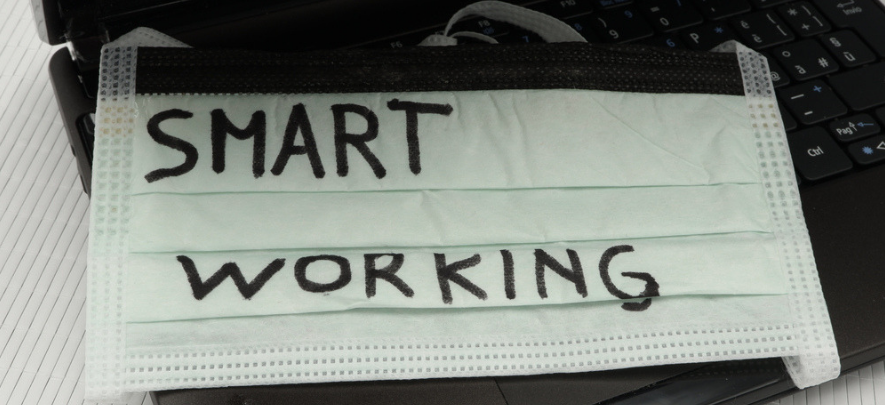Coronavirus: What to do when employees can’t work from home

Leadership & Management
243 week ago — 7 min read
While it is highly advisable for employees to work from home during this trying time of COVID-19 outbreak, not everyone has the luxury to work remotely or skip work. A large majority of the workforce have to work from the office. This situation could be due to many reasons including the following:
- Need to use specialized machinery (Factories, secure data centers)
- Frontlines or service jobs. (Security Guards, Receptionists)
- On-site jobs (Construction, Logistics)
- Lack of Wi-fi at home.
So with this, what can the management do?
As part of our ‘Proactively Productive’ series, we took inspiration from outside of the coronavirus to see how other professions prevent spread of negative elements—from how fire fighters stop the spread of forest fires, to how cyber security experts stop the spread of cyber bugs from invading computer systems. Here are 4 things you can do for your staff that are unable to work from home:
1. Create control lines
One of the most important components of wildfire suppression is the control line. Simply put, they are boundaries — natural or man-made — that fire fighters use to control and limit the spread of effects.
Applying this concept to the workforce means having clear boundaries to limit the spread of Coronavirus in your organizations. It means preventing interactions between different departments or branches.
Group staff into defined groups that will not interact with other groups physically. For example, Sales and Manufacturing do not need to interact on a daily basis, so make it a policy for these two groups to exercise social distancing.
For example, if you run a chain of convenience stores, it used to be common practice to appoint staffs to different locations to meet the manpower demand. Creating a control line means having clear instructions (and documentation) for staffs to only report to a certain branch. This not only limits the spread of the disease but also prevents the risk of having to shut down your entire chain of stores if one employee is found to have contracted the virus.
This does take sacrifices and a strong will to implement. If none of the staff of a branch can report for a shift, it might be tempting to assign staff from another branch over. But in these times of uncertainty, it might be better to close one branch for a day than to risk all your branches.
Another way is to group staff into defined groups that will not interact with other groups physically. For example, Sales and Manufacturing do not need to interact on a daily basis, so make it a policy for these two groups to exercise social distancing so that if there is a case in each department it won’t affect or disrupt your entire company. You can also restrict interactions between shifts so if one shift gets infected others can still work.
2. Build firewalls
We are all familiar with the concept of firewall in online security. It prevents cyber viruses and malware from entering our electronic devices to wreak havoc on our data. This concept is simple: build a preventive layer between outside elements and your internal organization. This is relevant especially to front line workers.
In Wuhan, where the virus originated, stores have implemented a policy where customers can text their orders to a public Whatsapp or Viber number (pasted on the door) and staff will bring their groceries or products to the door, so customers and staff do not have to interact or communicate face to face. Services like mobile payments also help greatly (It’s 2020 why don’t you have mobile payments set up?)
This strategy can also be implemented for service providers like banks, where customers can send a picture of their cheques to the teller and drop the actual cheque into a box that can be sanitized later. In the case of deliveries, the delivery man does not need to enter the building to deliver one parcel to one person. Have a delivery checkpoint where residents of the building can come collect their packages after it has been disinfected. Other ways include ordering lunch in bulk for staffs so they do not have to contend with the packed lunch crowd at eateries, or having ride share for staff so it is possible to trace with other staff have commuted with any infected individual.
3. Hot spotting
Hot spotting is the term used in fighting forest fires to describe the extra attention given to the most active and dangerous portions of a wildfire. The crews fighting the fire size up the parts of the blaze most likely to spread and try to devise the best strategy for keeping these areas in check. An extinguishing strategy is employed when fire fighters decide that a certain hotspot needs to be suppressed immediately.
This strategy requires management and human resource to be aware of the latest news, for example if there is an infectious cluster forming such as the South Korean Church or the Singapore SAFRA Clubhouse meeting. Identify employees that are affected or have had contact with these clusters and require them and those in their control groups to take leave immediately.
4. Contact journaling
One thing that can help medical staff especially if a staff gets infected is for employees to record their movements and the people they interact with on a daily basis. Set a simple exercise before the shift and after the shift to get your staff to write a short journal. Sharing where they have been or are going, the type of transport and routes they took and where they went for lunch. By practicing this, your business will not only have documentation to have health officials trace any possible spread but also have proof of any patients did and did not interact with.
There are many uncertainties surrounding COVID-19 today. It’s easy to be afraid and think only for ourselves, but these challenges should inspire us to be better than ourselves, and to make the important choices that will protect the vulnerable.
We hope that this article has been helpful to you in setting strategies to mitigate the effects of COVID-19 on your workforce.
Also read: 4 preventive measures to reduce the impact of COVID-19 on your business
To explore business opportunities, link with me by clicking on the 'Connect' button on our eBiz Card.
Disclaimer: The views and opinions expressed in this article are those of the author and do not necessarily reflect the views, official policy or position of GlobalLinker.
Posted by
Shao Yong ChewHi there! We are Rumarocket an Artificial Intelligence company that uses our A.I to solve individual employee challenges! From predicting attrition and recommending ways to help...
Network with SMEs mentioned in this article
View Shao Yong 's profile
SME Inspirations
Other articles written by Shao Yong Chew
Most read this week
Trending
Ecommerce 4 days ago













Comments (1)
Please login or Register to join the discussion